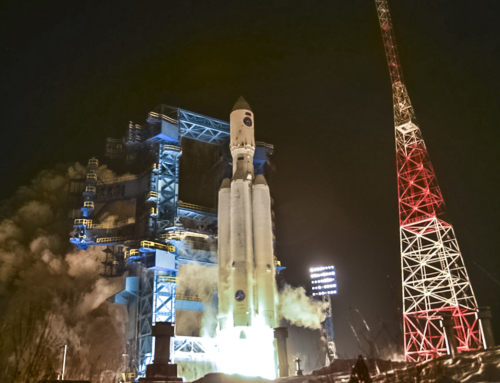Manufacturer: TsSKB Progress
Height: 46.3 meters (152 feet)
Diameter: 10.3 meters (33.8 feet, including boosters)
Mass: 312,000 kg (687,842 lb)
Payload to LEO: 7,800 kg (17,200 lb)
Payload to GTO: 2,800 kg (6,200 lb)
Stages: 2 or 3
Engines:
First Stage: 4 RD-107A boosters,Second Stage: 1 RD-108A engine,Third Stage (optional): 1 RD-0110 engine
Launch Sites: Baikonur, Vostochny, Plesetsk
TsSKB, now part of RKTs Progress, is a Russian aerospace company specializing in the development and production of space launch vehicles, satellites, and spacecraft systems. Based in Samara, Russia, the organization has played a key role in the Soviet and Russian space programs, particularly in the development of the Soyuz family of rockets.
Originally established as a division of OKB-1 under Sergei Korolev, TsSKB became an independent design bureau in the 1970s, focusing on space launch systems and reconnaissance satellites. Its most significant achievement is the Soyuz launch vehicle, derived from the R-7 ICBM, which has become the most frequently used and reliable launch system in history. The Soyuz rocket is used for crewed missions to the International Space Station (ISS), commercial satellite launches, and interplanetary missions.
Beyond the Soyuz program, TsSKB has also developed satellite systems such as the Resurs, Yantar, and Bion series, used for Earth observation, reconnaissance, and biological research in space. The company has contributed to Russia’s remote sensing capabilities and space-based scientific research.
Now operating under RKTs Progress, the company continues to manufacture Soyuz launch vehicles and supports modern space initiatives, including satellite deployments and interplanetary exploration. With decades of expertise, it remains a cornerstone of Russia’s space industry and a critical player in international spaceflight.
Configurations
Soyuz Launch Vehicle:
Derived from the R-7 ICBM, it is the most frequently used and reliable launch system in history.
Used for crewed missions to the ISS, commercial satellite launches, and interplanetary missions.
Soyuz Configurations:
Soyuz-U (1973–2017): One of the most widely used variants, launching satellites and cargo missions.
Soyuz-FG (retired in 2019): Featured upgraded engines, primarily used for crewed ISS missions.
Soyuz-2 series (current): Includes Soyuz-2.1a, Soyuz-2.1b, and Soyuz-2.1v, with modernized avionics, improved engines, and enhanced payload capacity.
Satellite & Space Systems:
Developed key satellite series, including:
Resurs – Earth observation.
Yantar – Reconnaissance.
Bion – Biological research in space.
Missions
Crewed Spaceflight:
Launched Soyuz spacecraft for missions to Salyut, Mir, and the International Space Station (ISS).
Soyuz rockets were the only means of ISS crew transport from 2011 to 2020 after the U.S. Shuttle program ended.
Used for international astronaut missions in collaboration with NASA, ESA, Roscosmos, and other space agencies
Satellite Deployment:
Launched Resurs satellites for environmental monitoring.
Deployed Yantar reconnaissance satellites for military intelligence.
Launched Bion satellites for biological research in space.
Supported Meteor-M satellites for weather and climate monitoring.
Interplanetary Missions:
Supported the launch of Luna (Moon), Venera (Venus), and Fobos-Grunt (Mars) missions.
Launched ESA’s ExoMars 2016 mission, carrying the Trace Gas Orbiter to Mars.
Commercial Spaceflight:
Soyuz rockets used by Arianespace for launches from Kourou, French Guiana.
Deployed OneWeb satellites for global internet coverage.
Launched Galileo navigation satellites and other commercial payloads.
Future Missions:
Continues to provide reliable launch services for Russia’s space program and global partnerships.
Supports advancements in crewed spaceflight, satellite technology, and interplanetary exploration.






